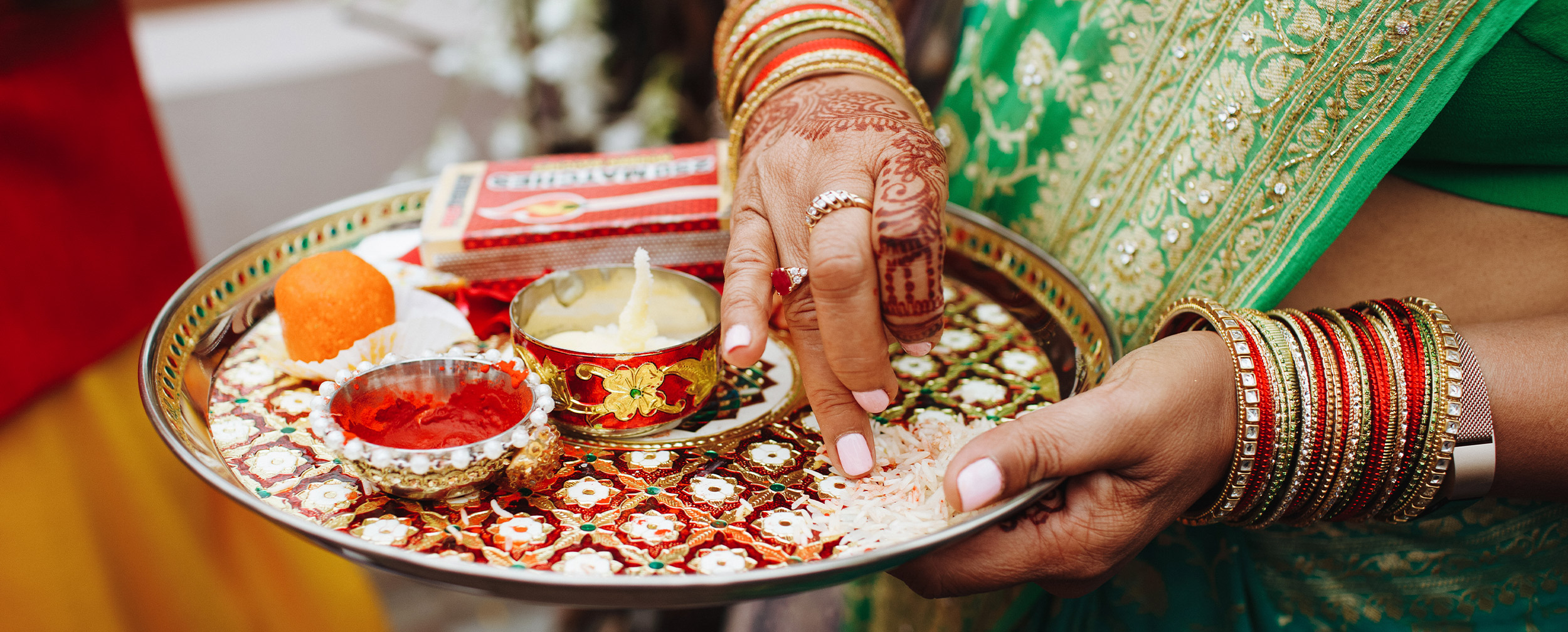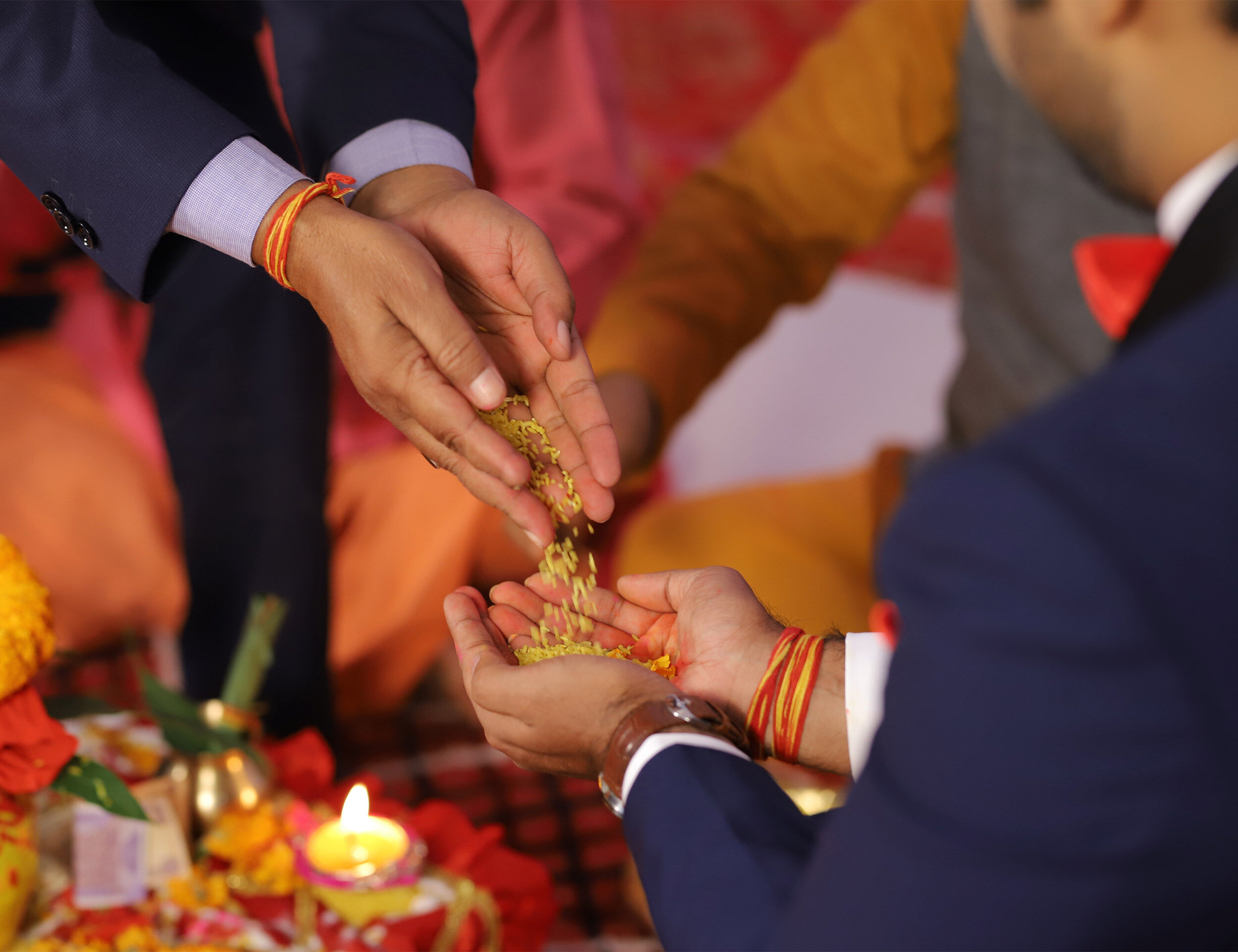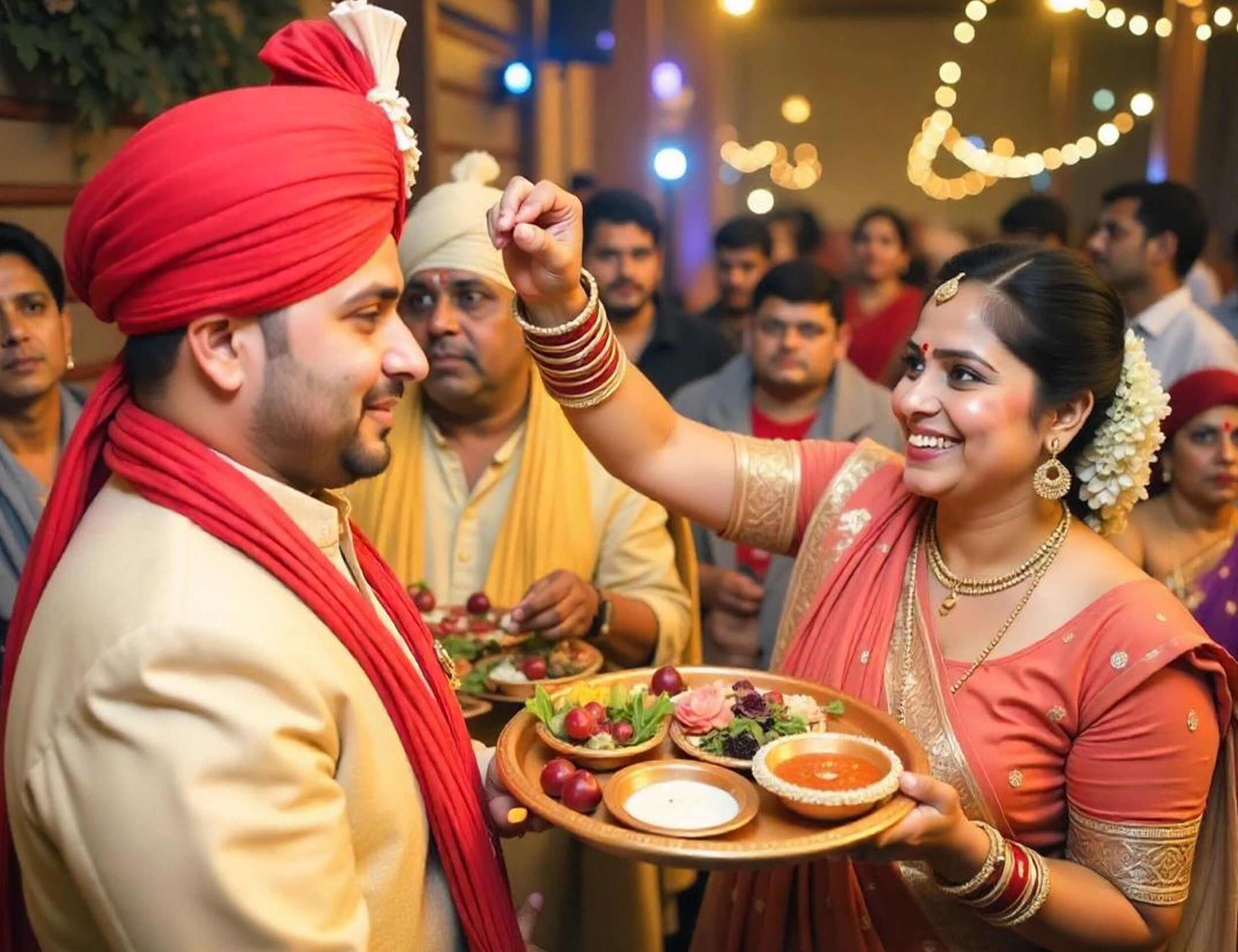STORIES BY MANYAVAR & MOHEY

Lifestyle
The Tilak Ceremony: A Heartfelt Pre-Wedding Ritual
Date 23 June 2025 Reading time: 7-10 mins
The tilak ceremony is a heartfelt pre-wedding ritual that holds immense significance in Indian weddings. It's a beautiful celebration of two families coming together, marking the formal acceptance of the groom by the bride's family. The ceremony is typically held at the groom's residence, where the bride's family visits to perform the tilak ritual, exchange gifts, and share in the joy of the upcoming union.
Understanding the Tilak Ceremony: An Overview
The tilak ceremony is an important pre-wedding event in Indian weddings, where the groom is formally welcomed and accepted into the bride's family. It is a joyous occasion filled with rituals, blessings, and the exchange of gifts.
The History and Significance of the Tilak Ceremony
The tilak ritual in Indian weddings has deep roots in ancient Indian culture. The word "tilak" itself comes from the Sanskrit word "tilaka", which means "a mark of auspiciousness". The application of tilak on the forehead is considered a sacred gesture, symbolising the bestowal of blessings and good wishes.
In the context of weddings, the tilak ceremony significance lies in its role as a formal acceptance of the groom by the bride's family. It signifies the beginning of a new relationship between the two families, who come together to celebrate the union of their children.
The Rituals of the Tilak Ceremony
The tilak ritual in Indian weddings varies slightly across different regions and communities in India. However, some common elements are observed in most tilak ceremonies.
The Role of the Tilak in the Ceremony
The central ritual of the ceremony involves the application of the tilak, a red vermillion mark, on the groom's forehead. This mark is traditionally made by the bride's father or an elder male member of her family. The tilak is a symbol of blessings, respect, and goodwill, signifying the bride's family's acceptance of the groom.
The substances used for the tilak, such as vermillion, sandalwood paste, ash, clay, or turmeric, all hold spiritual significance. They represent devotion, purity, and the invocation of positive energies for the couple's married life.
The Process of the Tilak Ceremony
The ceremony typically takes place at the groom's residence or a chosen venue. The bride's family, along with close relatives and friends, visits the groom's house bearing gifts and sweets.
Upon arrival, the bride's family is warmly welcomed by the groom's family. The ceremony begins with a pooja, or a small prayer ceremony, where the families seek blessings from the divine.
The bride's father then applies the tilak on the groom's forehead, followed by other male members of the bride's family. The groom is also presented with gifts, which can include clothing, jewellery, and other traditional items. The bride's brother often ties a sacred thread called "kalawa" on the groom's wrist, symbolising the bond between the two families.
After the tilak application and gift exchange, the families enjoy a festive meal together, marking the beginning of their new relationship.
The Tilak Ceremony: A Celebration of Unity and Commitment
The ceremony holds great significance in Indian weddings as it symbolises the coming together of two families. It is a celebration of unity, love, and commitment.
How the Tilak Ceremony is Celebrated Across Different Cultures
While the core essence of the tilak ceremony significance remains the same, there are slight variations in how it is celebrated across different regions and communities in India.
In North Indian weddings, the ceremony is often called "sagan" or "roka". The groom is presented with a shagun (auspicious gift) of money, clothes, and sweets. The bride's family also ties a safa (turban) on the groom's head, symbolising respect and honour.
In South Indian weddings, the ceremony is known as "nischayathartham" or "nichayathartham".
The groom is presented with new clothes, fruits, and sweets. The bride's father applies the tilak on the groom's forehead and blesses him with rice grains.
Modern Interpretations of the Tilak Ceremony
While the traditional essence of the ceremony remains intact, modern couples are adding their own creative twists to make the ceremony more personalised and memorable.
Some couples choose to have a themed tilak ritual in Indian weddings, incorporating elements of their shared interests or love story. Others opt for a fusion of traditional and contemporary elements, such as having a live band or a photo booth at the ceremony.
Some also opt for personalised tilak designs or use eco-friendly materials. The gifts exchanged also reflect modern sensibilities, ranging from stylish accessories to thoughtful mementos. The ceremony itself may be followed by a themed lunch or a fun activity that brings both families closer.
Many families also use the ceremony as an opportunity to showcase their cultural heritage through traditional attire. The groom can don a stunning sherwani or kurta jacket set, while the bride's family can opt for elegant sarees or lehengas. Accessories like safas, malas, and brooches can add a touch of grandeur to the groom's ensemble.
The Tilak Ceremony as a Symbol of Cultural Heritage
The tilak ritual in Indian weddings is a beautiful testament to the rich cultural heritage of Indian weddings. It is a celebration of love, unity, and the coming together of families. As you embark on your wedding journey, embracing the tilak ceremony's significance can add a touch of tradition and meaning to your celebrations.
As you plan your tilak ceremony, remember to choose outfits that reflect your personal style while honouring the cultural significance of the occasion. Manyavar and Mohey offer a stunning collection of traditional and contemporary Indian wedding wear that can help you create the perfect look for your special day.
Whether you opt for a classic sherwani, a trendy Indo-Western outfit, or a regal lehenga, remember that the essence of the ceremony lies in the love and blessings that surround you. Embrace the warmth of this beautiful tradition, and let it be a cherished memory in your wedding journey.







